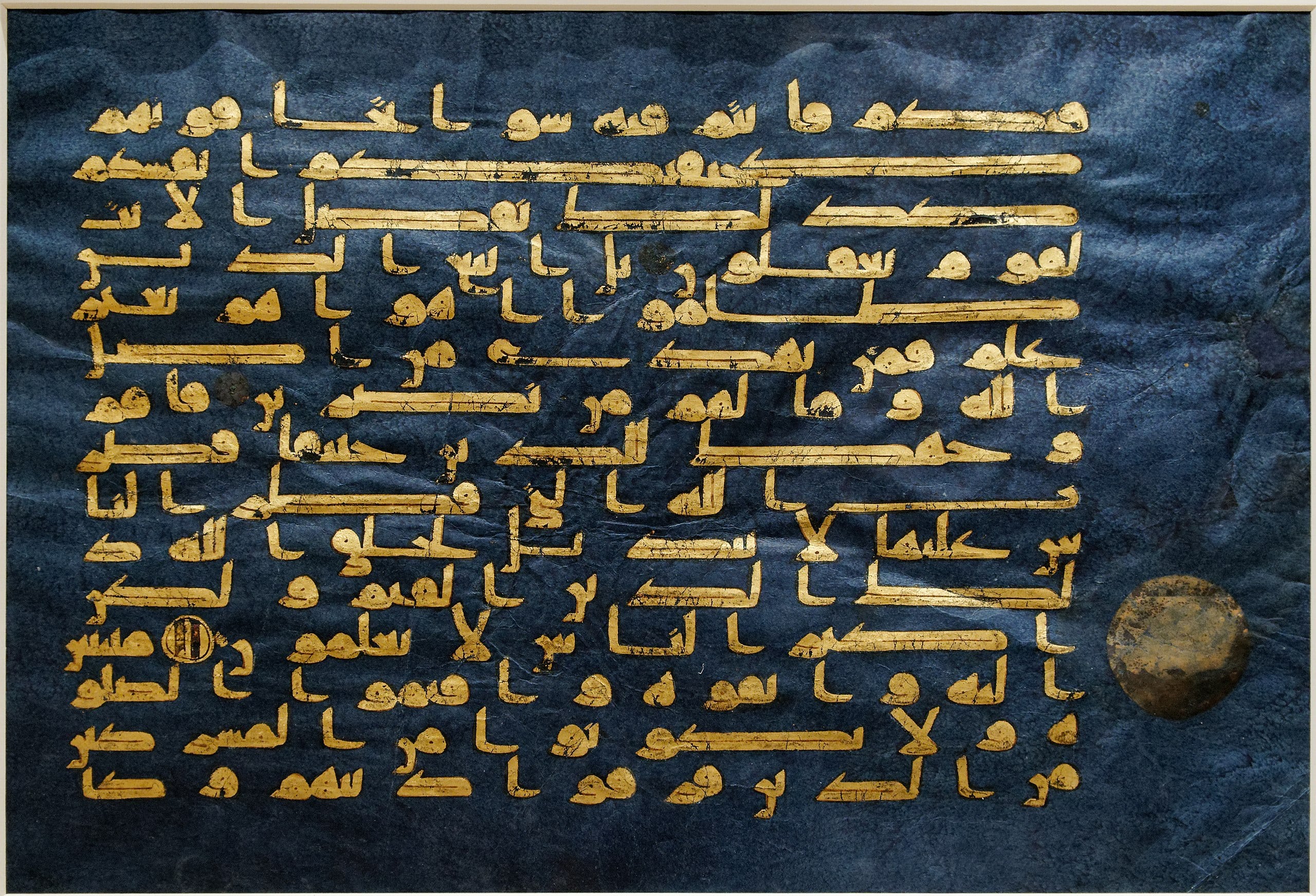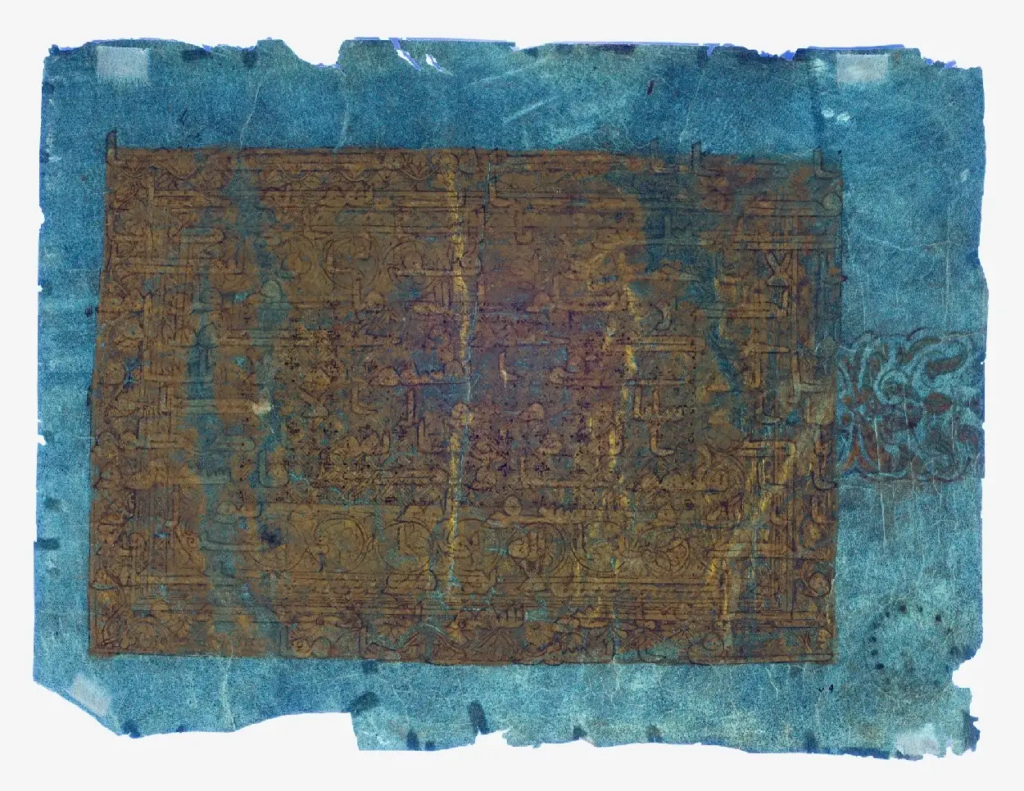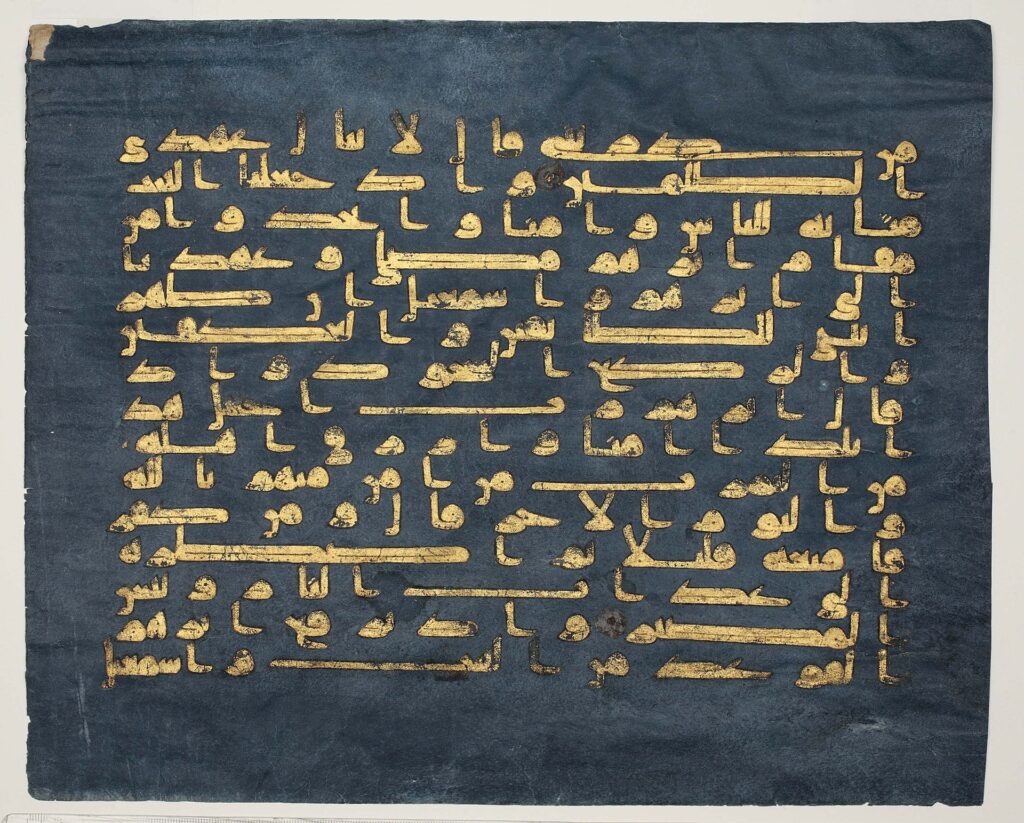
The hidden text beneath the intricate gold leaf decorations on a page of the Blue Quran has been revealed
Researchers from the Zayed National Museum have uncovered hidden text beneath a complex layer of gold leaf on a page of the Blue Quran, one of the world’s most renowned Quran manuscripts, using multispectral imaging techniques.
The team discovered verses from the Surah An-Nisa hidden under an intricate decoration adorned with gold leaf on a page of the Blue Quran, which is considered one of the most significant examples of Islamic calligraphy.
The Blue Quran is a manuscript of the Quran dating from the 8th to 9th century CE. This manuscript is known for its distinctive vibrant blue or indigo pages, silver decorations, and gold Kufi calligraphy. It is believed that its color palette references the purple-hued, gilded manuscripts produced in the neighboring Byzantine Empire.
The text is written in the Kufi script. As with other early Quranic texts, the readability of this writing is challenging because the letters are arranged to make each line the same length, and the necessary diacritical marks to separate the letters have been omitted.
Originally, it consisted of 600 pages, each made from sheep skin. The leaves of the manuscript have been known to scholars since the early 20th century, but it first garnered significant academic attention in the 1970s after several pages were exhibited in international exhibitions, such as the Islamic Arts exhibition at the Hayward Gallery in London. The majority of the manuscript is thought to be attributed to 9th-century Iran or Tunisia. Some scholars have suggested that the manuscript may have been produced in Umayyad Spain, Kalbid Sicily, or Abbasid Iraq.

The pages were examined using multispectral imaging techniques, which can reveal text and images that have faded over time and are no longer visible to the human eye.
In this instance, the decoration may have been added by a calligrapher to correct their own mistake, which could involve copying the text of a page from the sacred scripture. The cost of producing the manuscript would have been too high to justify starting anew with a fresh sheep skin page dyed in indigo, leading to the text being covered with intricate patterns.
These actions, stemming from the decisions made by the calligraphers, represent a method of manuscript production that has not been previously highlighted in the Blue Quran and is quite rare in Islamic manuscripts from this era.

Mai Al Mansouri, Assistant Curator at the Zayed National Museum, stated in a press release: “The groundbreaking research conducted by the Zayed National Museum on the Blue Quran provides new insights into the origins and production of this significant manuscript, underscoring the museum’s role in the cultural and academic life of the UAE and beyond.”
Nurul Iman Bint Rusli, Curator of the Zayed National Museum, stated in a press release: “It is believed that only one copy of the Blue Quran exists, and around 100 known pages have fascinated scholars for decades. The advanced technology used to shed new light on this page of the manuscript helps provide additional perspectives on the production of this rare Quranic copy.”
Today, only about 100 pages of the Blue Quran remain, found in private and museum collections worldwide; five of these are on display at the Zayed National Museum.
You may also like
- A 1700-year-old statue of Pan unearthed during the excavations at Polyeuktos in İstanbul
- The granary was found in the ancient city of Sebaste, founded by the first Roman emperor Augustus
- Donalar Kale Kapı Rock Tomb or Donalar Rock Tomb
- Theater emerges as works continue in ancient city of Perinthos
- Urartian King Argishti’s bronze shield revealed the name of an unknown country
- The religious center of Lycia, the ancient city of Letoon
- Who were the Luwians?
- A new study brings a fresh perspective on the Anatolian origin of the Indo-European languages
- Perhaps the oldest thermal treatment center in the world, which has been in continuous use for 2000 years -Basilica Therma Roman Bath or King’s Daughter-
- The largest synagogue of the ancient world, located in the ancient city of Sardis, is being restored











Leave a Reply